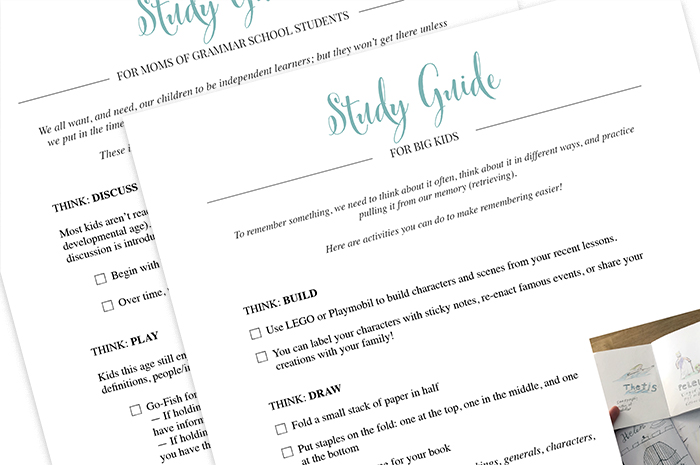
In all my years of schooling I never figured out the meaning of two little words: review and study. I ignored assignments with those words because I had no idea what they meant. What was I supposed to do? I didn’t figure it out until my own kids were floundering and a friend/mentor reached out with this article. Ever since, I’ve been gathering engaging study tips to help build memory.
Here’s what to do when it’s time to study!
The Essentials
As I shared in an earlier post, the degree to which we think about something is the degree to which we remember it. This is why it’s crucial for kids to work with material in different ways.
They need to see it, write it, talk about it, and create with it. But they need time to do this.
If we wait for the review lesson at the end of a unit, we put our kids at a serious disadvantage. They’re not going to remember what they learned at the beginning because memory doesn’t work that way. It has to be built over time.
Two other essentials for building memory are studying mastered facts/concept with unmastered ones, and trying to pull things from our memory.
So our children need to:
- Work with the material in different ways
- Practice well-known facts/concepts with lesser-known ones
- Try pulling facts/concepts from memory rather than always seeing it in front of them
- Do this multiple times a week
Study Tips #1: Think about it
Thinking with Mom
We all want (and need!) our children to be independent learners; but they won’t get there unless we put in the time modeling, coaching, and laying strong foundations for independent study.
Discussions
These don’t have to be over the top! Eight to eleven year olds are still young. We laid foundations in their first years of school and now we’re building — one level at a time.
When we rush ahead to high school level discussions, we end up relishing our own insights while leaving our children behind.
Games
Kids this age still enjoy games like Go-Fish and Memory! They can make their own cards with terms/definitions, people/their importance, etc. and then use them to play games with you or their siblings.
Elkonin Boxes
We love using these for spelling! I shared how we use them in this post.
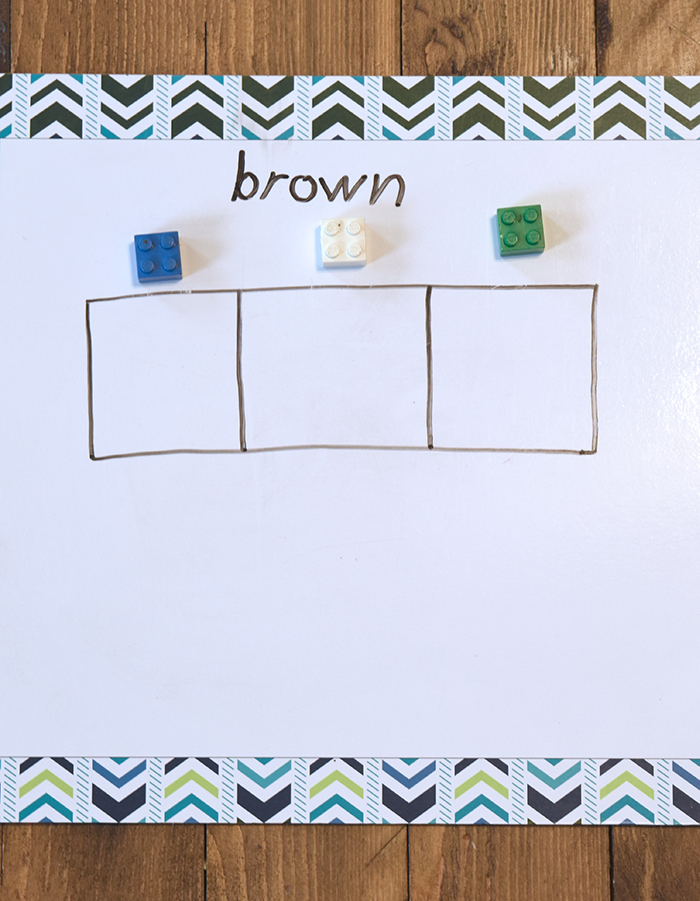
Thinking Independently
Building Bricks
Have your child use building bricks to recreate characters and events from their literature and history lessons. They can label their characters with mini sticky notes, build an important scene, and re-enact famous events.
A friend of mine used this idea for her co-op students when studying Greek Myths and their creations were amazing!
Booklets & Charts
My son loved creating booklets in Montessori school. Just fold a stack of paper in half, staple in the middle, and they’re ready to go. These can be used for:
- Character Books: heroes, kings, inventors, generals, literary characters, explorers, etc.
- Science & Math Books: geometric figures, fraction families, unit conversions, phases of the moon, lifecycles, weather, and more
Charts take booklets a step further by allowing your child to compare/contrast the facts, events, and people they’re studying.
Color-coded Flashcards
This can be especially helpful for kids who confuse similar facts. Just place a small dot or line on each card to color-code them based on themes, relationships, or locations.
For example, gods of Greece in gold, Greek heroes in blue, historical figures in green, rulers in purple, etc. Dates could be color-coded by whether they refer to a war, a victory, or a discovery.
Handmade Timeline
There are plenty of ready-to-go timelines available, but I think it’s better for kids to make their own. It requires them to think more deeply about each person/event to figure out where they belong, how to fit them in a busy time period, and where their beginning and end fits into the big picture.
They can also include hand-drawn pictures to go with each item on the timeline!
Bullet Outline
Have your child write down a name, character, event, or place and then put four bullet points underneath. Label these with who, what, where, and why. For each bullet, have them return to their text to find the sentence or phrase that answers that question.
Note: depending on the child, I wouldn’t introduce this activity until the latter half of 5th grade. Some may need to wait longer.
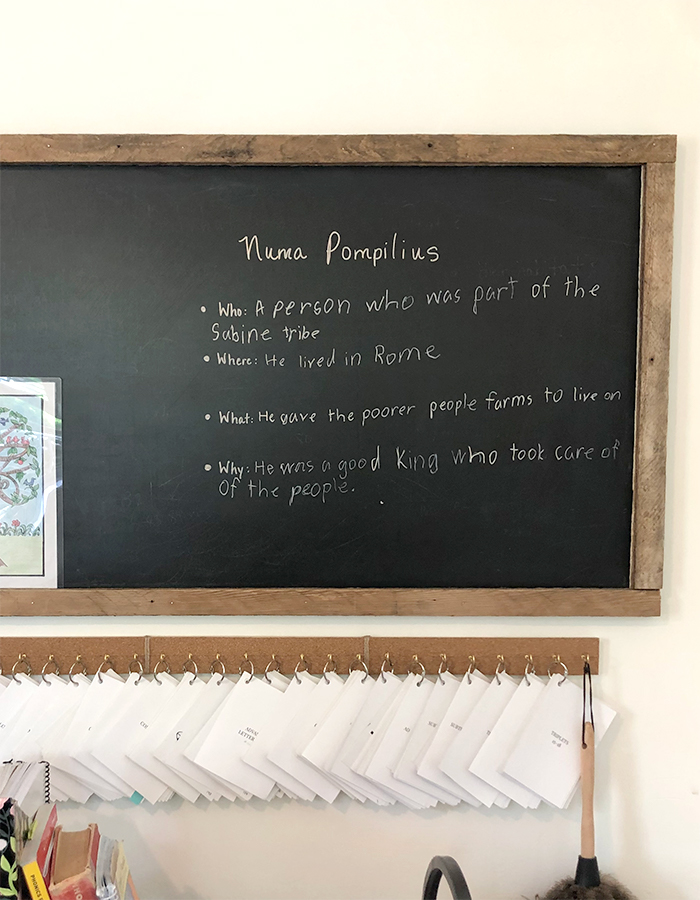
Study Tips #2: Retrieve it
Retrieving with Mom
These ideas help you assess your child’s learning on a regular basis. Start out slow though. You may need to give prompts, or even say the whole answer and then have them repeat it. The more they practice retrieving, the less support they’ll need for it.
Recitation
This was the number one way to gauge learning until the early 20th century. Your child can recite facts, definitions, concepts, character lists, events, dates….all of this can become second-nature with recitation!
Dictation
This is perfect for spelling words and grammar rules. For math, you can also combine dictation/recitation:
- Give a math fact and have them write the fact plus the answer
- Name a geometric figure and have them write the name and draw the figure
Flashcards
There are many independent ways to use flashcards, but they’re also a fantastic teaching tool. You can use them for three-period lessons, games, and oral drills. I include instructions for these in the free printable below!
Oral Narrations
Oral summaries are a great way to practice retrieving information! Just be sure to return to the text with your child to find any important points that may have been missed. Otherwise, it will reinforce inaccurate/incomplete memory.
Retrieving Independently
Written Narrations
As with oral narrations, be sure your child goes back to the text to find/fill in any important points they may have missed.
Flashcards
In addition to ready-made flashcards, your child can make their own cards for things like vocabulary words, unit conversions, or math formulas. Regardless of the subject, there are so many ways for your child to use flashcards:
- Read the fronts and backs of a specific set of cards. Then go back through, reading only the front and trying to retrieve the back from memory
- For mastered cards, they can read the backs and try to retrieve the front from memory
- They can make their own set of cards with the term on one card and the definition on another card and then try to match them. The matches can be left out for you to check.
- Read each term, writing only its definition in a notebook; go back the next day and fill in the related terms from memory
Here is the setup we use for flashcards:
Study Tips #3: Make It Happen
There are so many options for studying, but they won’t help if we forget to do them! Our curriculum schedules things like recitation and oral drills, but leaves the rest to individual families.
The video above explains how we schedule flashcards. I assign other study activities as we go, but I’d like to set a more definitive system for them. I’ll let you know if/when I get that together.
In the meantime, here’s a free Study Guide set for you!
PIN FOR LATER:

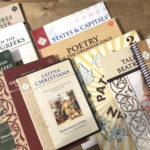
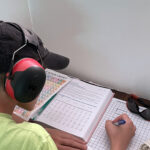
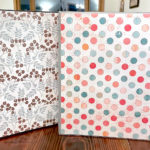
Thank you for sharing this. I wish I was as organized as you are.
Oh, please don’t think that way! I’m very good at coming up with plans and systems but I’m horrible at following through. It’s a constant game of picking myself up and trying again. Many times, when I share ideas here, it helps me remember the tools we need to use again, or use more consistently, or the ones I know about but have never tried. No one is an expert in homeschooling and none of us are doing it perfectly. We simply bring our basket each day and ask God to multiply the offering. As St. Therese said, “All is Grace.”